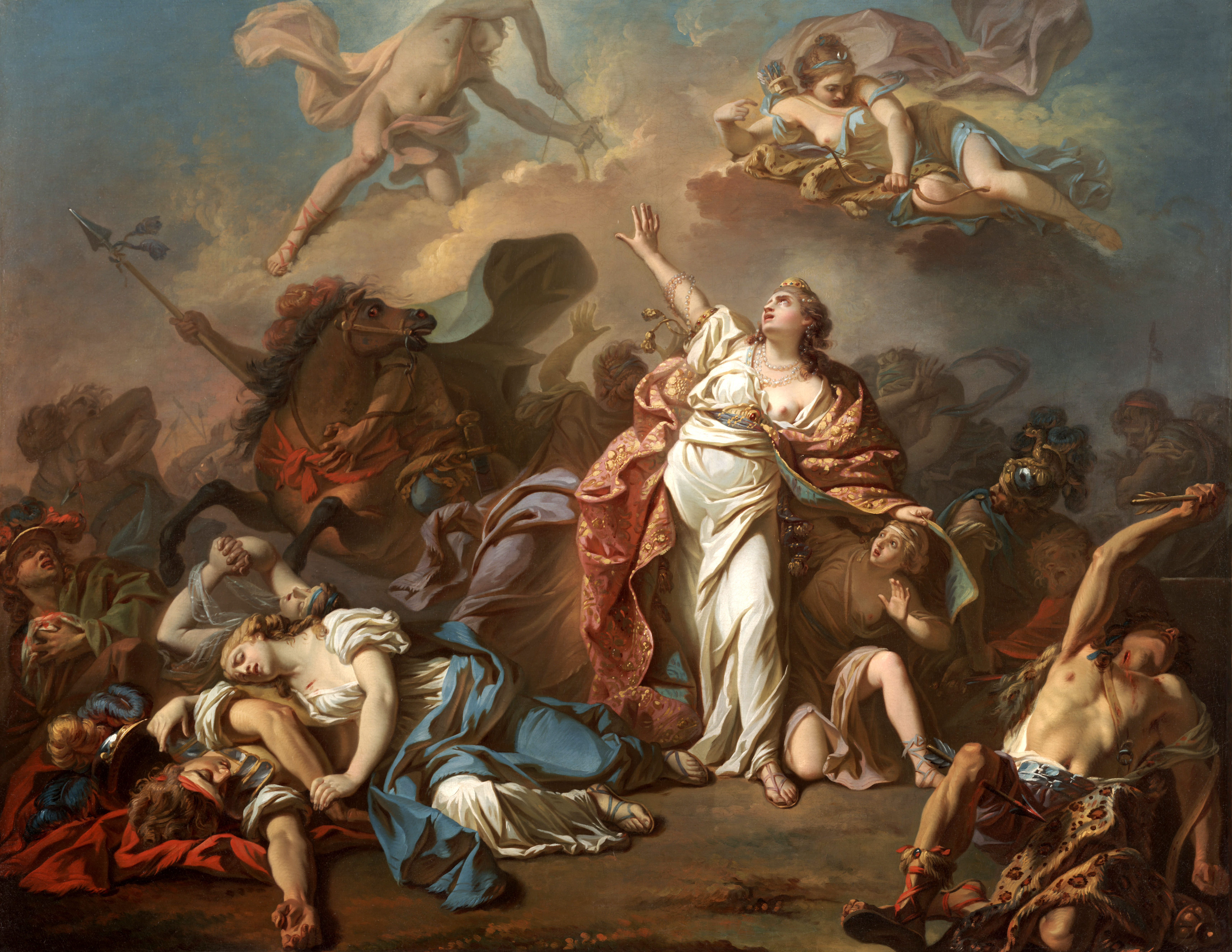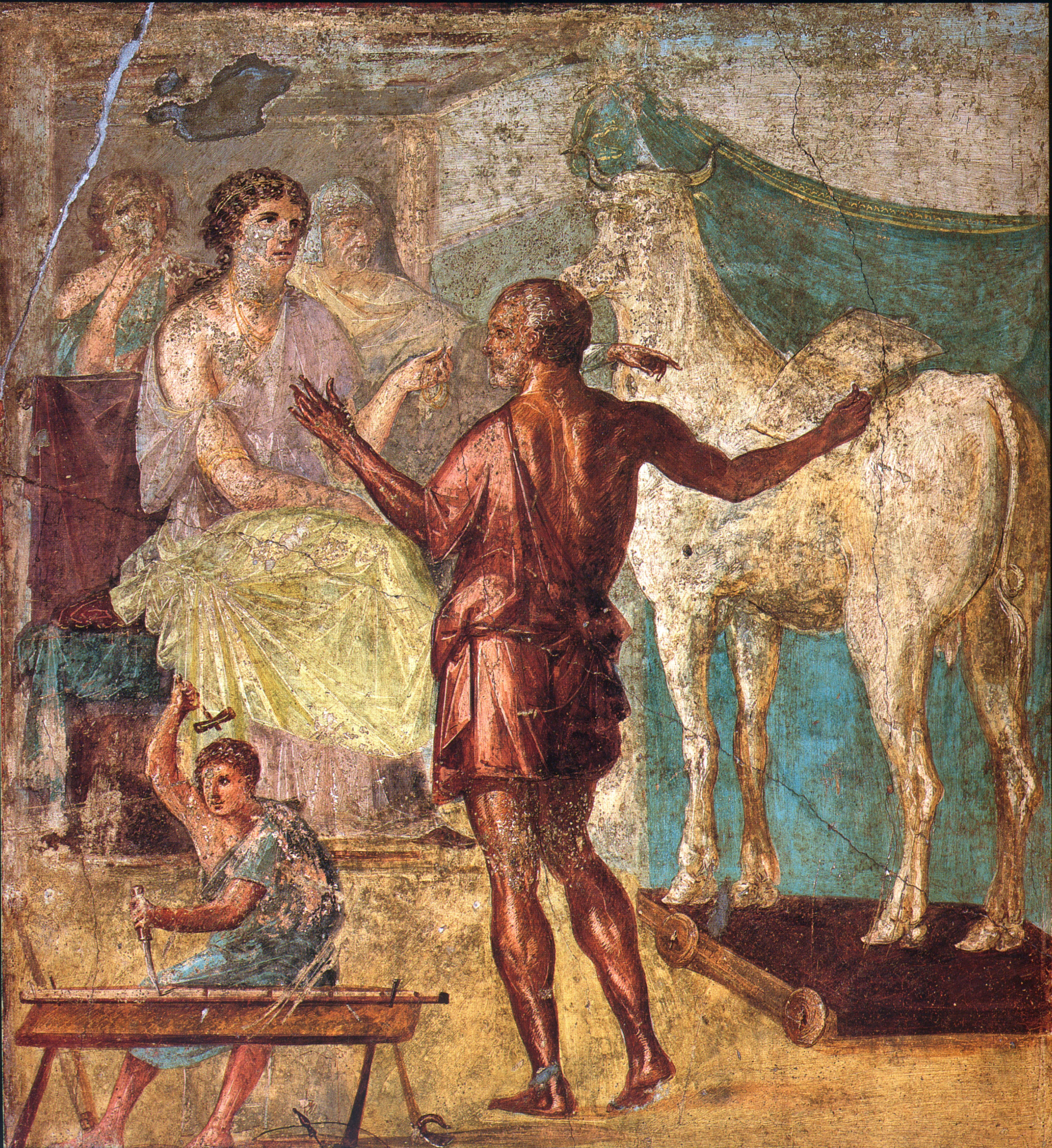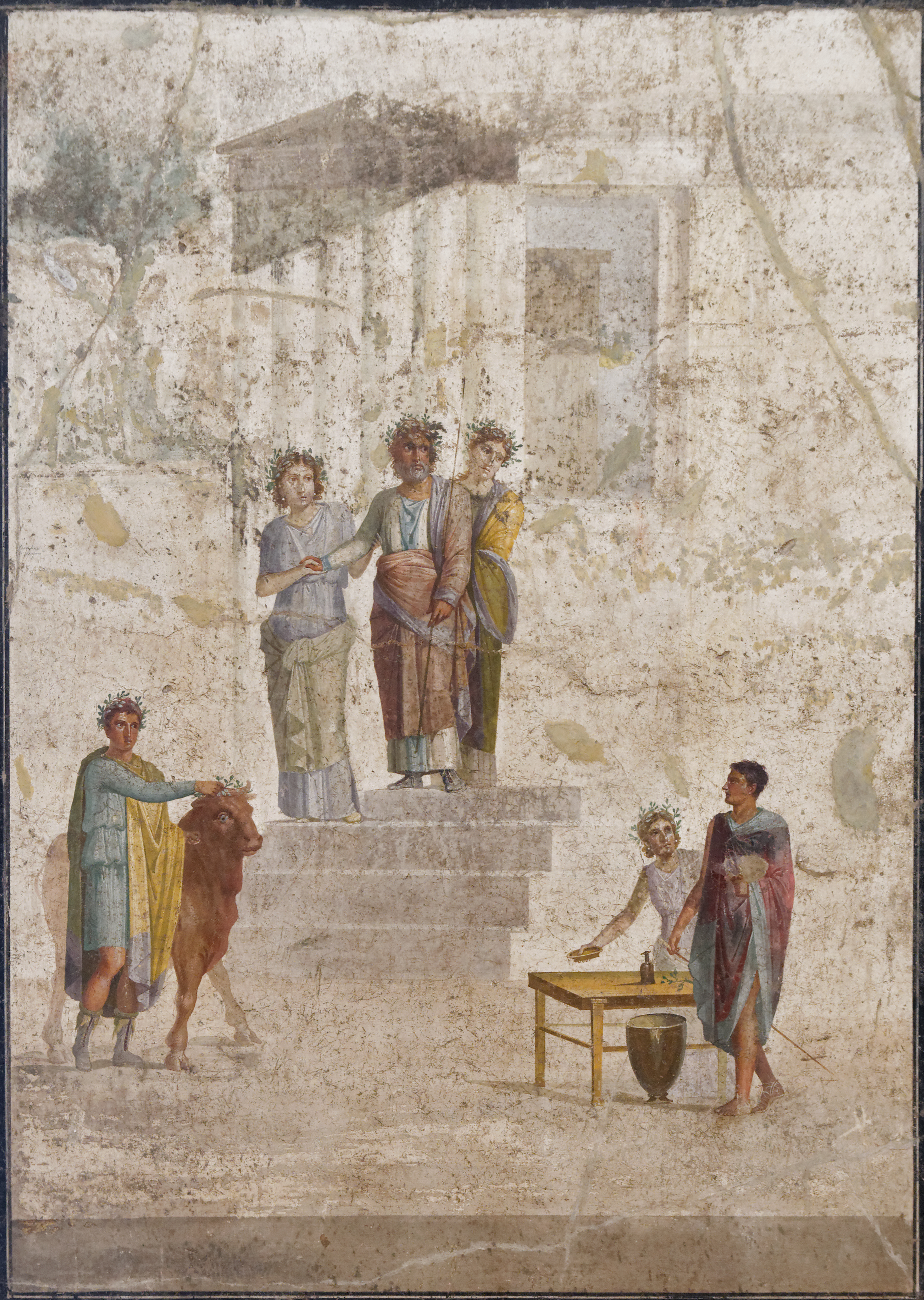|
Palaephatus
Palaephatus (Ancient Greek: ) was the author of a rationalizing text on Greek mythology, the paradoxographical work ''On Incredible Things'' (; ), which survives in a (probably corrupt) Byzantine edition. This work consists of an introduction and 52 brief sections on various Greek myths. The first 45 have a common format: a brief statement of a wonder tale from Greek mythology, usually followed by a claim of disbelief ("This is absurd" or "This is not likely" or "The true version is..."), and then a sequence of every-day occurrences which gave rise to the wonder-story through misunderstanding. The last seven are equally brief retellings of myth, without any rationalizing explanation. Palaephatus's date and name are uncertain; many scholars have concluded that the name "Palaephatus" is a pseudonym. What little evidence is extant suggests that the author was likely active during the late fourth century BCE. ''On Incredible Things'' Palaephatus's introduction sets his approach betwe ... [...More Info...] [...Related Items...] OR: [Wikipedia] [Google] [Baidu] |
Cerberus
In Greek mythology, Cerberus (; grc-gre, Κέρβερος ''Kérberos'' ), often referred to as the hound of Hades, is a multi-headed dog that guards the gates of the Underworld to prevent the dead from leaving. He was the offspring of the monsters Echidna and Typhon, and was usually described as having three heads, a serpent for a tail, and snakes protruding from multiple parts of his body. Cerberus is primarily known for his capture by Heracles, the last of Heracles' twelve labours. Descriptions Descriptions of Cerberus vary, including the number of his heads. Cerberus was usually three-headed, though not always. Cerberus had several multi-headed relatives. His father was the multi snake-headed Typhon, and Cerberus was the brother of three other multi-headed monsters, the multi-snake-headed Lernaean Hydra; Orthrus, the two-headed dog who guarded the Cattle of Geryon; and the Chimera, who had three heads: that of a lion, a goat, and a snake. And, like these close relatives ... [...More Info...] [...Related Items...] OR: [Wikipedia] [Google] [Baidu] |
Euhemerus
Euhemerus (; also spelled Euemeros or Evemerus; grc, Εὐήμερος ''Euhēmeros'', "happy; prosperous"; late fourth century BC) was a Greek mythographer at the court of Cassander, the king of Macedon. Euhemerus' birthplace is disputed, with Messina in Sicily as the most probable location, while others suggest Chios or Tegea. The philosophy attributed to and named for Euhemerus, euhemerism, holds that many mythological tales can be attributed to historical persons and events, the accounts of which have become altered and exaggerated over time. Euhemerus's work combined elements of fiction and political utopianism. Early Christian writers, such as Lactantius, used Euhemerus's belief that the ancient gods were originally human to confirm their inferiority regarding the Christian God. Life Little is known about Euhemerus's life, and his birthplace is disputed. Classical writers such as Diodorus Siculus, Plutarch, and Polybius, maintained that Euhemerus was a Messenian, but d ... [...More Info...] [...Related Items...] OR: [Wikipedia] [Google] [Baidu] |
Paradoxography
Paradoxography is a genre of classical literature which deals with the occurrence of abnormal or inexplicable phenomena of the natural or human worlds. Early surviving examples of the genre include: * Palaephatus's ' ("On Incredible Things") ( 4th century BCE) * The ' ("Collection of Extraordinary Tales") composed by Antigonus of Carystus ( fl. 3rd century BCE), partly on the basis of a paradoxographical work of Callimachus * Apollonius Paradoxographus's ' (2nd century BCE) It is believed that the content of the pseudo-Aristotelian ''On Marvellous Things Heard'' (''De mirabilibus auscultationibus'') originated in the Hellenistic period, while the final form reflects centuries of expansion at least as recent as the second century of the Christian era.Laura Gibbs, review of Gabriella Vanotti, ' (Milano: Bompiani, 2007)''Bryn Mawr Classical Review'' 2009.02.22/ref> Phlegon of Tralles's ''Book of Marvels'', which dates from the 2nd century CE, is perhaps the most famous example of th ... [...More Info...] [...Related Items...] OR: [Wikipedia] [Google] [Baidu] |
Hydra (mythology)
The Lernaean Hydra or Hydra of Lerna ( grc-gre, Λερναῖα Ὕδρα, ''Lernaîa Hýdra''), more often known simply as the Hydra, is a serpentine water monster in Greek and Roman mythology. Its lair was the lake of Lerna in the Argolid, which was also the site of the myth of the Danaïdes. Lerna was reputed to be an entrance to the Underworld, and archaeology has established it as a sacred site older than Mycenaean Argos. In the canonical Hydra myth, the monster is killed by Heracles (Hercules) as the second of his Twelve Labors. According to Hesiod, the Hydra was the offspring of Typhon and Echidna. It had poisonous breath and blood so virulent that even its scent was deadly. The Hydra possessed many heads, the exact number of which varies according to the source. Later versions of the Hydra story add a regeneration feature to the monster: for every head chopped off, the Hydra would regrow two heads. Heracles required the assistance of his nephew Iolaus to cut off all of ... [...More Info...] [...Related Items...] OR: [Wikipedia] [Google] [Baidu] |
Lycia
Lycia (Lycian language, Lycian: 𐊗𐊕𐊐𐊎𐊆𐊖 ''Trm̃mis''; el, Λυκία, ; tr, Likya) was a state or nationality that flourished in Anatolia from 15–14th centuries BC (as Lukka) to 546 BC. It bordered the Mediterranean Sea in what is today the Provinces of Turkey, provinces of Antalya Province, Antalya and Muğla Province, Muğla in Turkey as well some inland parts of Burdur Province. The state was known to history from the Late Bronze Age records of ancient Egypt and the Hittite Empire. Lycia was populated by speakers of the Luwian language group. Written records began to be inscribed in stone in the Lycian language (a later form of Luwian) after Lycia's involuntary incorporation into the Achaemenid Empire in the Iron Age. At that time (546 BC) the Luwian speakers were decimated, and Lycia received an influx of Persian speakers. Ancient sources seem to indicate that an older name of the region was Alope ( grc, Ἀλόπη}, ). The many cities in Ly ... [...More Info...] [...Related Items...] OR: [Wikipedia] [Google] [Baidu] |
Niobe
In Greek mythology, Niobe (; grc-gre, Νιόβη ) was a daughter of Tantalus and of either Dione, the most frequently cited, or of Eurythemista or Euryanassa, the wife of Amphion and the sister of Pelops and Broteas. Her father was the ruler of a city located near Manisa in today's Aegean Turkey that was called "Tantalis" or "the city of Tantalus", or "Sipylus". The city was located at the foot of Mount Sipylus and its ruins were reported to be still visible at the beginning of the 1st century AD, although few traces remain today. Pliny reports that Tantalis was destroyed by an earthquake and the city of Sipylus (Magnesia ad Sipylum) was built in its place. Niobe's father is referred to as " Phrygian" and sometimes even as "King of Phrygia", although his city was located in the western extremity of Anatolia where Lydia was to emerge as a state before the beginning of the first millennium BC, and not in the traditional heartland of Phrygia, situated more inland. There are r ... [...More Info...] [...Related Items...] OR: [Wikipedia] [Google] [Baidu] |
Amphion And Zethus
Amphion ( ()) and Zethus (; Ζῆθος ''Zēthos'') were, in ancient Greek mythology, the twin sons of Zeus (or Theobus) by Antiope. They are important characters in one of the two founding myths of the city of Thebes, because they constructed the city's walls. Mythology Childhood Amphion and Zethus were the sons of Antiope, who fled in shame to Sicyon after Zeus raped her, and married King Epopeus there. However, either Nycteus or Lycus attacked Sicyon in order to carry her back to Thebes and punish her. On the way back, she gave birth to the twins and was forced to expose them on Mount Cithaeron. Lycus gave her to his wife, Dirce, who treated her very cruelly for many years.Apollodorus, 3.5.5 Antiope eventually escaped and found her sons living near Mount Cithaeron. After they were convinced that she was their mother, they killed Dirce by tying her to the horns of a bull, gathered an army, and conquered Thebes, becoming its joint rulers. They also either killed Lycus o ... [...More Info...] [...Related Items...] OR: [Wikipedia] [Google] [Baidu] |
Lynceus
In Greek mythology, Lynceus (; grc, Λυγκεύς, Lynkeús, lynx-eyed) was a king of Argos, succeeding Danaus on the throne. Family Lynceus was named as a descendant of Belus through his father Aegyptus, who was the twin brother of Danaus, father of fifty daughters called Danaïdes. He had forty-nine siblings and out of them had five full brothers namely Proteus, Busiris, Enceladus Lycus and Daiphron through their mother Argyphia, a woman of royal blood. By Hypermnestra, Lynceus became the father of Abas, who succeeded him as king. Mythology Lynceus's father Aegyptus commanded that his sons should marry the Danaïdes but Danaus together with his daughters fled to Argos where King Pelasgus ruled. Then Lynceus together with his brothers and father arrived to take the Danaïdes. Danaus gave them to spare the Argives the pain of a battle. However, he instructed his daughters to kill their husbands on their wedding night. Forty-nine followed through, but one, Hypermnest ... [...More Info...] [...Related Items...] OR: [Wikipedia] [Google] [Baidu] |
Medea
In Greek mythology, Medea (; grc, Μήδεια, ''Mēdeia'', perhaps implying "planner / schemer") is the daughter of King Aeëtes of Colchis, a niece of Circe and the granddaughter of the sun god Helios. Medea figures in the myth of Jason and the Argonauts, appearing in Hesiod's ''Theogony'' around 700 BCE, but best known from Euripides's tragedy ''Medea'' and Apollonius of Rhodes's epic ''Argonautica''. Medea is known in most stories as a sorceress and is often depicted as a priestess of the goddess Hecate. Medea plays the archetypal role of helper-maiden, aiding Jason in his search for the Golden Fleece by using her magic to save his life out of love. Once he finished his quest, she abandons her native home of Colchis, and flees westwards with Jason, where they eventually settle in Corinth and get married. Euripides's 5th-century BCE tragedy ''Medea'', depicts the ending of her union with Jason, when after ten years of marriage, Jason abandons her to wed King Creon's daugh ... [...More Info...] [...Related Items...] OR: [Wikipedia] [Google] [Baidu] |
Daedalus
In Greek mythology, Daedalus (, ; Greek: Δαίδαλος; Latin: ''Daedalus''; Etruscan: ''Taitale'') was a skillful architect and craftsman, seen as a symbol of wisdom, knowledge and power. He is the father of Icarus, the uncle of Perdix, and possibly also the father of Iapyx. Among his most famous creations are the wooden cow for Pasiphaë, the Labyrinth for King Minos of Crete which imprisoned the Minotaur, and wings that he and his son Icarus used to escape Crete. It was during this escape that Icarus did not heed his father's warnings and flew too close to the sun; the wax holding his wings together melted and Icarus fell to his death. Epigraphic evidence The name ''Daidalos'' appears to be attested in Linear B, a writing system used to record Mycenaean Greek. The name appears in the form ''da-da-re-jo-de'', possibly referring to a sanctuary. Family Daedalus's parentage was supplied as a later addition, with various authors attributing different parents to him. His fat ... [...More Info...] [...Related Items...] OR: [Wikipedia] [Google] [Baidu] |
Chimera (mythology)
The Chimera ( or ), also Chimaera (''Chimæra'') (Ancient Greek: , ''Chímaira'' means 'she-goat'), according to Greek mythology, was a monstrous fire-breathing hybrid creature, composed of different animal parts from Lycia, Asia Minor. It is usually depicted as a lion, with the head of a goat protruding from its back, and a tail that might end with a snake's head. It was an offspring of Typhon and Echidna and a sibling of monsters like Cerberus and the Lernaean Hydra. The term "chimera" has come to describe any mythical or fictional creature with parts taken from various animals, to describe anything composed of disparate parts or perceived as wildly imaginative, implausible, or dazzling. Family According to Hesiod, the Chimera's mother was a certain ambiguous "she", which may refer to Echidna, in which case the father would presumably be Typhon, though possibly (unlikely) the Hydra or even Ceto was meant instead. However, the mythographers Apollodorus (citing Hesiod as his ... [...More Info...] [...Related Items...] OR: [Wikipedia] [Google] [Baidu] |
Pelias
Pelias ( ; Ancient Greek: Πελίας) was king of Iolcus in Greek mythology. He was the one who sent Jason on the quest for the Golden Fleece. Family Pelias was the son of Tyro and Poseidon. His wife is recorded as either Anaxibia, daughter of Bias, or Phylomache, daughter of Amphion. He was the father of Acastus, Pisidice, Alcestis, Pelopia, Hippothoe, Amphinome, Evadne, Asteropeia, Antinoe and Medusa. These daughters are sometimes called collectively as Peliades after their father. Mythology Early years Tyro was married to King Cretheus of Iolcus, with whom she had three sons, Aeson, Pherês, and Amythaon, but she loved Enipeus, a river god. She pursued Enipeus, who refused her advances. One day, Poseidon, filled with lust for Tyro, disguised himself as Enipeus and lay with her; from their union were born twin sons, Pelias and Neleus. Tyro exposed her sons on a mountain to die, but they were found by a herdsman who raised them as his own, as one story goes, or they w ... [...More Info...] [...Related Items...] OR: [Wikipedia] [Google] [Baidu] |
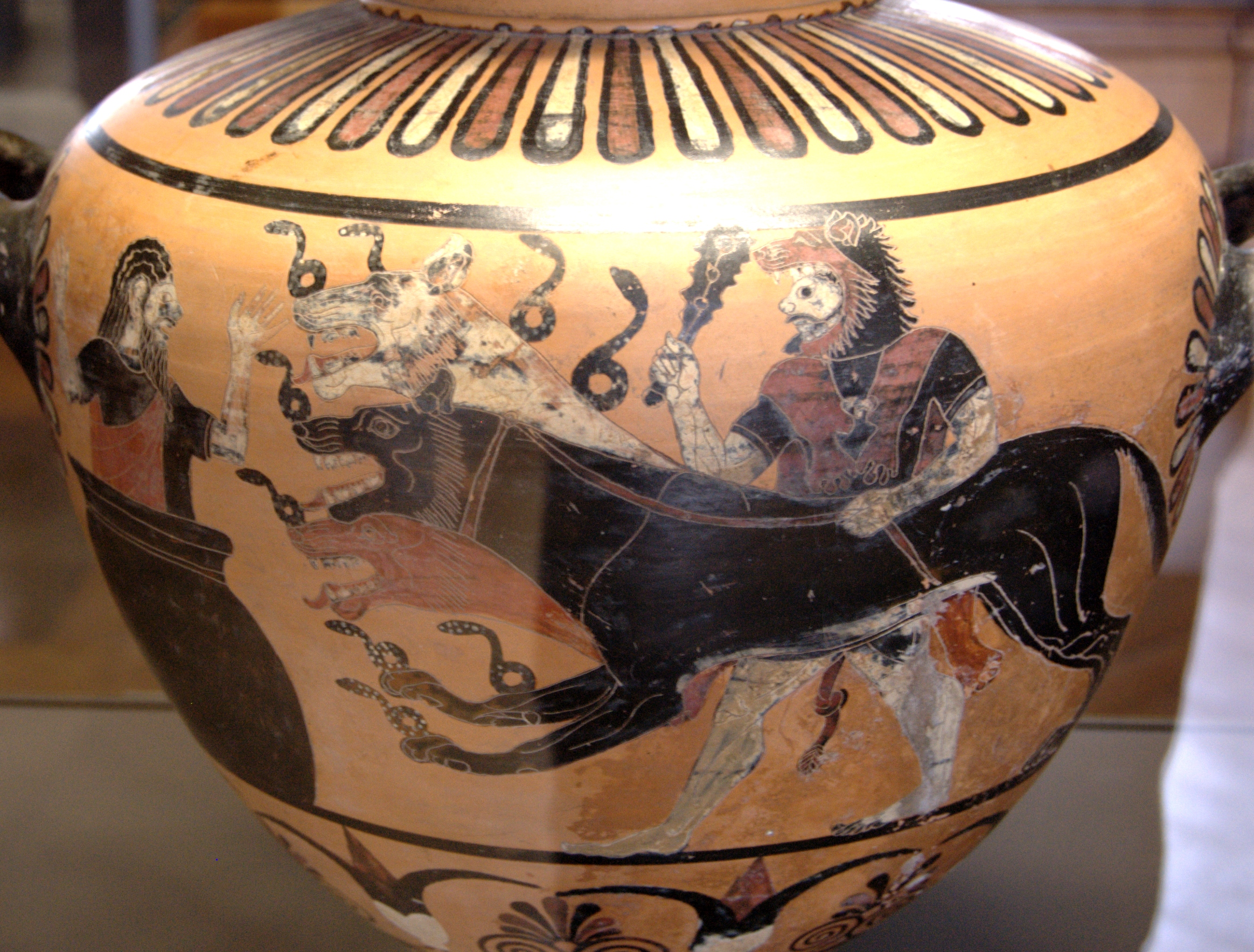
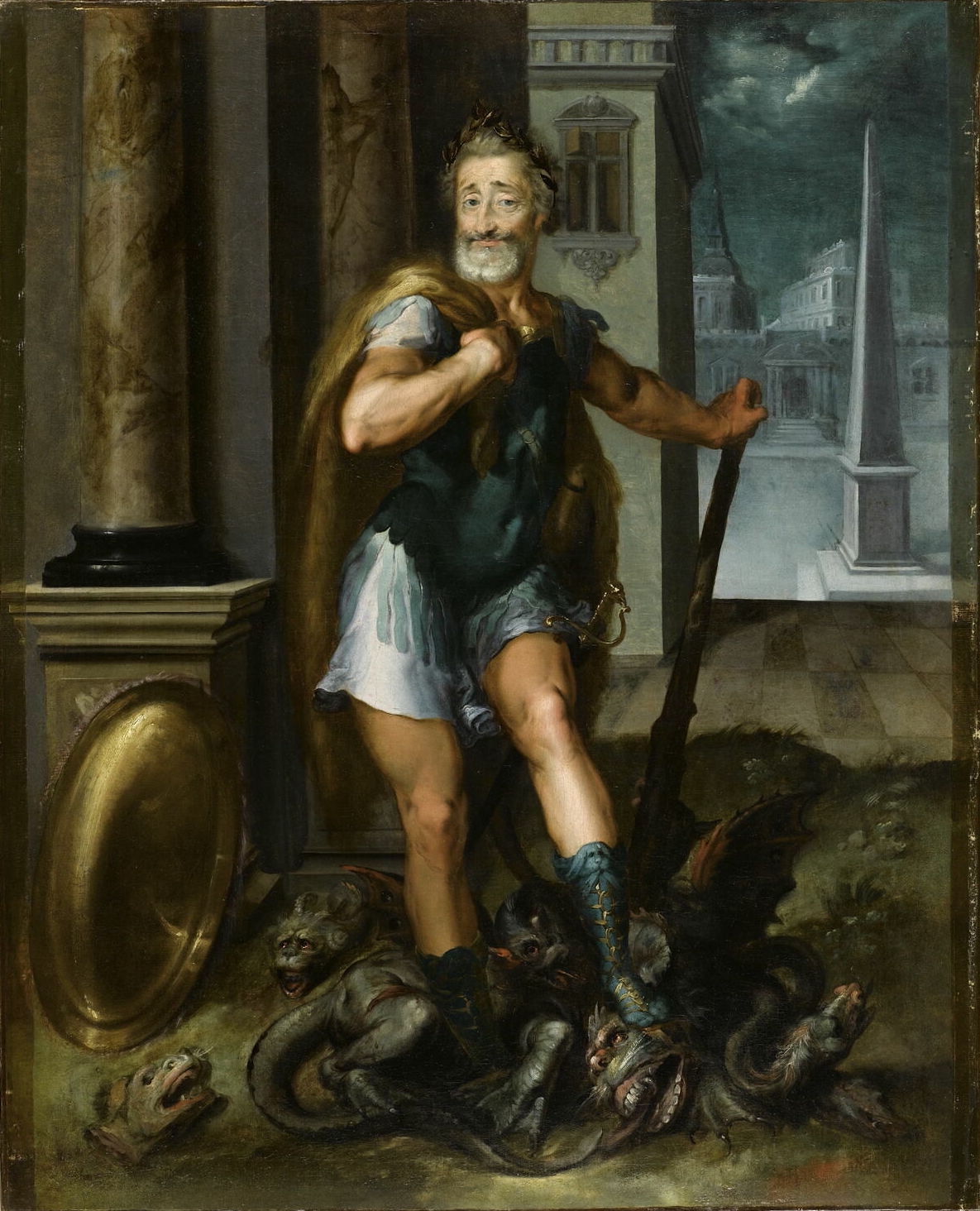
.jpg)
